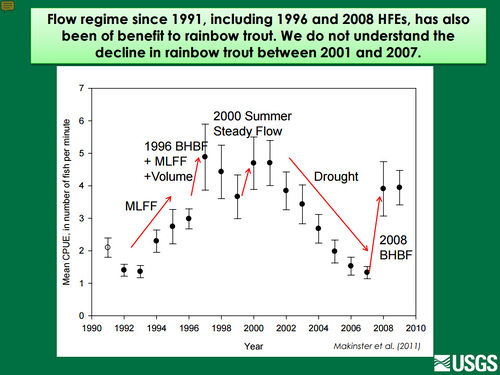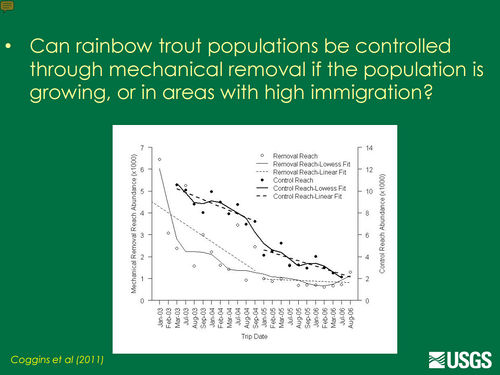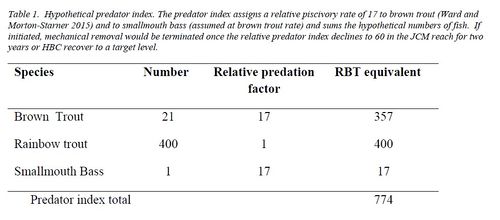Difference between revisions of "Trout Reduction Efforts"
Cellsworth (Talk | contribs) |
Cellsworth (Talk | contribs) |
||
| Line 79: | Line 79: | ||
|style="color:#000;"| | |style="color:#000;"| | ||
| − | *[https://www.nps.gov/grca/learn/nature/trout-reduction.htm Bright Angel Creek Non-Native Trout Reduction Project] | + | *[https://www.nps.gov/grca/learn/nature/trout-reduction.htm Bright Angel Creek Non-Native Trout Reduction Project (2002-present)] |
| − | *Brown trout control at the mouth of Bright Angel Creek | + | *Brown trout control at the mouth of Bright Angel Creek |
| − | *Mainstem trout removal at the LCR | + | *Mainstem trout removal at the LCR (2003-2006) |
*[http://gcdamp.com/index.php?title=Trout_Management_Flows Trout Management Flows] | *[http://gcdamp.com/index.php?title=Trout_Management_Flows Trout Management Flows] | ||
Revision as of 16:43, 16 November 2017
|
|
Findings from the Natal Origins Project (NO) Project
|
| -- |
-- |
-- |
|---|
Coggins et al. 2011.Our results suggest that removal efforts were successful in rapidly shifting the fish community from one dominated numerically by nonnative species to one dominated by native species. Additionally, increases in juvenile native fish abundance within the removal reach suggest that removal efforts may have promoted greater survival and recruitment. However, drought-induced increases in river water temperature and a systemwide decrease in rainbow trout abundance concurrent with our experiment made it difficult to determine the cause of the apparent increase in juvenile native fish survival and recruitment. |
|



